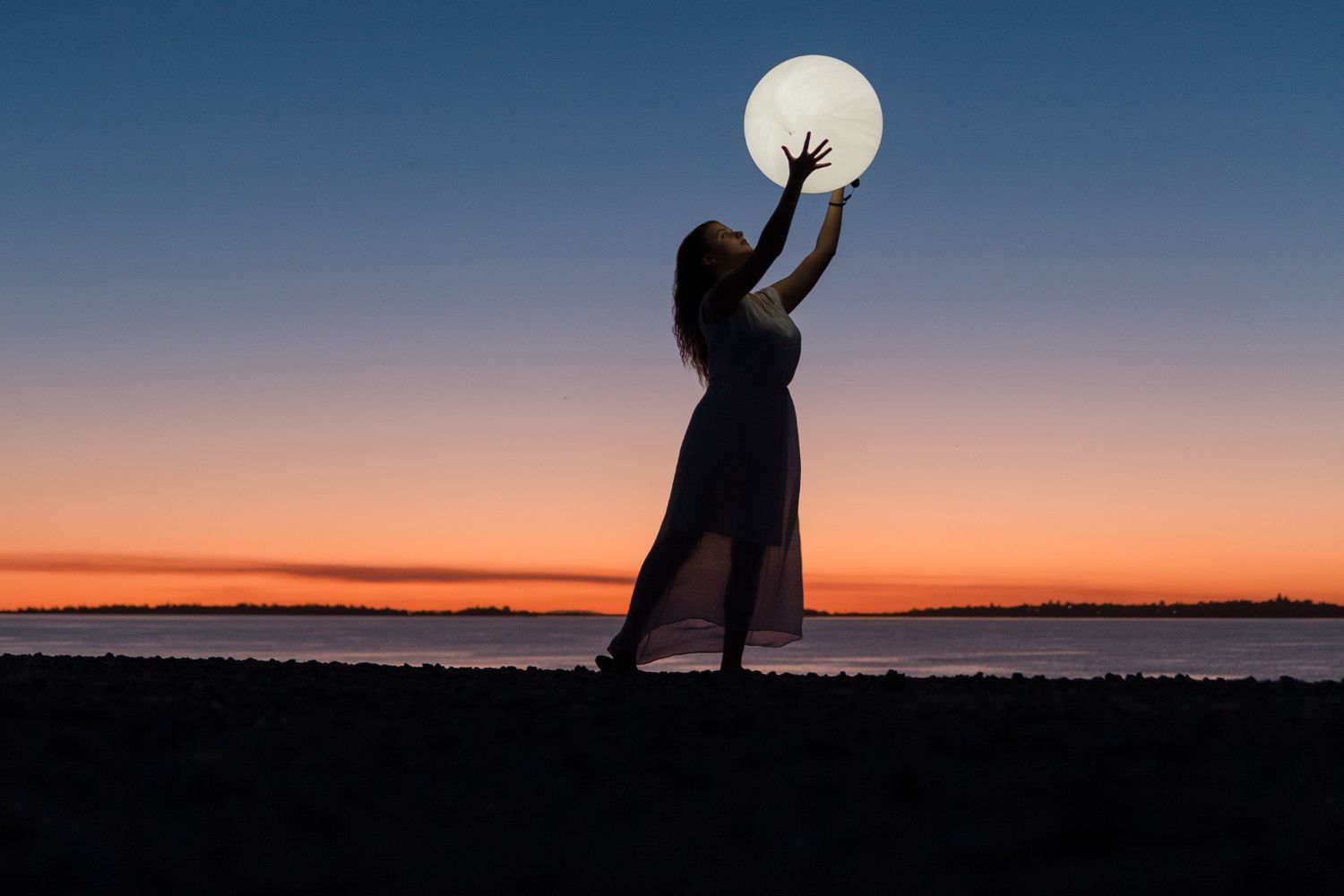It's highly probable that in the past the menstrual cycle was synchronized with lunar cycles, but then artificial lights and human activities in general disrupted this balance. These are the conclusions of a study led by Julius-Maximilians-Universität Würzburg (Germany). But the study still deserves further investigation

The connection between menstrual cycles and lunar cycles has always been the subject of controversial studies and theories. But now research led by Julius-Maximilians-Universität Würzburg (Germany) seems to have found very convincing evidence. According to the authors, in particular, it’s highly probable that in the past the menstrual cycle was synchronized with lunar cycles, but then artificial lights and human activities in general disrupted this balance.
That our satellite has a significant influence on Earth is certainly not a recent discovery: it has long been known, for example, that its gravitational pull interacts with our planet by shifting water masses according to the daily rhythm of tides.
On this subject, it was also recently discovered how our satellite is moving farther and farther away from us, at a rate of almost 1.6 inches (4 cm) per year, a phenomenon that is modifying tides and making our days longer, millimeter by millimeter.
But it’s quite difficult to know whether the same gravitational force also influences life on Earth and in particular the human organism, such as women’s menstrual cycles. And the discussion becomes even more complicated when it comes to how the fluctuating brightness of Earth’s satellite between full moon and new moon influences human beings.
We demonstrate that synchronization with the moon has decreased significantly since the introduction of LEDs and the increasing use of smartphones and screens of all kinds
reports Charlotte Förster, lead author of the work

©Science Advances
The study was conducted by analyzing long-term menstrual data from women over the past 50 years.
The results showed that the menstrual cycles of women whose data had been recorded before the introduction of light-emitting diodes in 2010 and the widespread use of smartphones were significantly synchronized with the full moon and new moon cycle. After 2010, cycles were mostly synchronized only in January, when gravitational forces between moon, sun and Earth are at their maximum
Scientists therefore hypothesize that humans have an internal lunar clock that can be synchronized with our satellite’s cycle through natural nighttime light and gravitational forces. However, the coupling of this clock with the lunar cycle in humans is compromised by increased nighttime lighting due to artificial light.
Lunar clocks are widespread in marine organisms, but have not yet been demonstrated in humans – continues Förster – Indeed, many species synchronize their reproductive behavior with a specific phase of the lunar cycle to increase reproductive success. The human menstrual cycle also has a duration similar to that of the lunar cycle, about 29.5 days, and recent studies also suggest at least temporary synchronicity between the menstrual and lunar cycles

©Science Advances
This study, however, is not enough and the moon’s influence on the female cycle remains controversial.
It is not entirely clear how such a lunar clock could be synchronized by the small cyclical variations in gravity between Earth and Moon
But these results are consistent with what has been demonstrated in sleep and psychiatry research.
For example, in 2013 work led by the University of Basel (Switzerland) had demonstrated that people sleep significantly less during full moon and new moon compared to other times.
But artificial light disrupts synchronization, and this could in fact be another effect of light pollution, which has already been shown to be harmful to many living species.
Overall, the findings of the new research suggest that humans can react not only to moonlight, but also to gravitational cycles caused by the moon
However, our study demonstrates that greater exposure to artificial light severely compromises the synchrony between the menstrual cycle and the lunar cycle
According to this study, in particular, artificial nighttime light not only “eclipses” natural lunar cycles, but also shortens the duration of the menstrual cycle. However, since continuous synchronization is only possible if the cycle duration is close to the lunar one, this shortening in turn reduces the probability of synchronization.
But why LEDs and more recent lighting sources in particular?
LEDs have much higher energy than gas lamps and light bulbs. Moreover, they contain a high percentage of blue light, to which our photoreceptors in the eye are particularly sensitive
Be careful though, the authors specify that, while having clearly demonstrated that the synchronization of the female menstrual cycle with the moon is weakened by LEDs, smartphones and screens of all kinds, they have not been able to demonstrate a causal link, which is fundamental to truly affirm that this form of light pollution has determined the imbalance.
Research will continue, also because from the data evaluation a potential practical advantage of considerable importance emerges.
Since menstrual cycle length appears to be a possible indicator of age-dependent female fertility, our results could be relevant not only for human physiology and behavior, but also for fertility and contraception
concludes Charlotte Förster
The work was published in Science Advances.
Sources: Julius-Maximilians-Universität Würzburg / Science Advances
